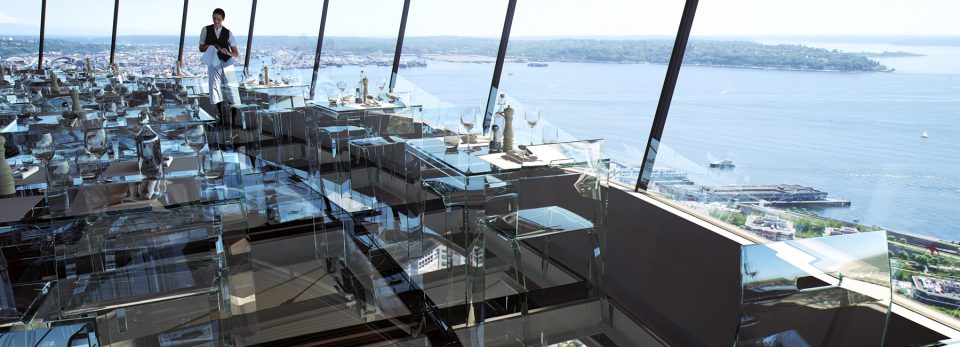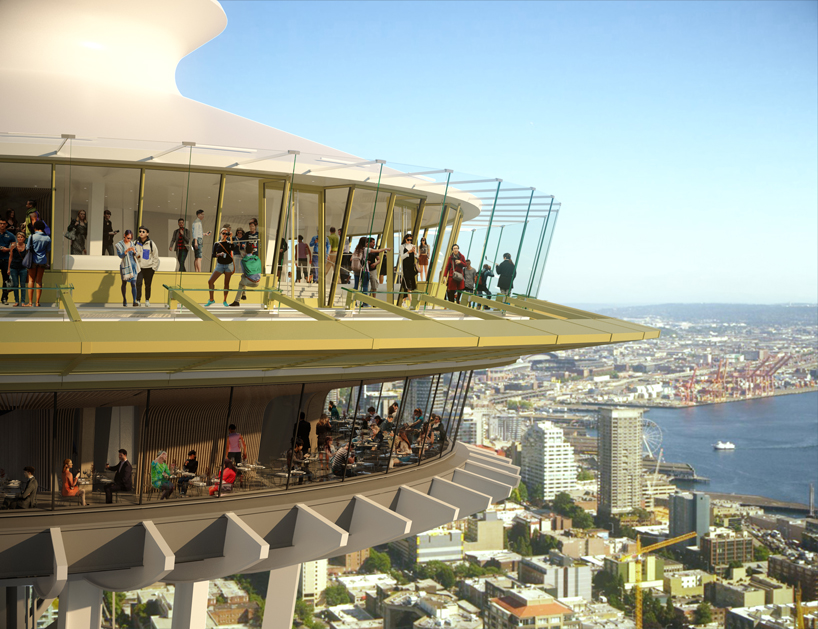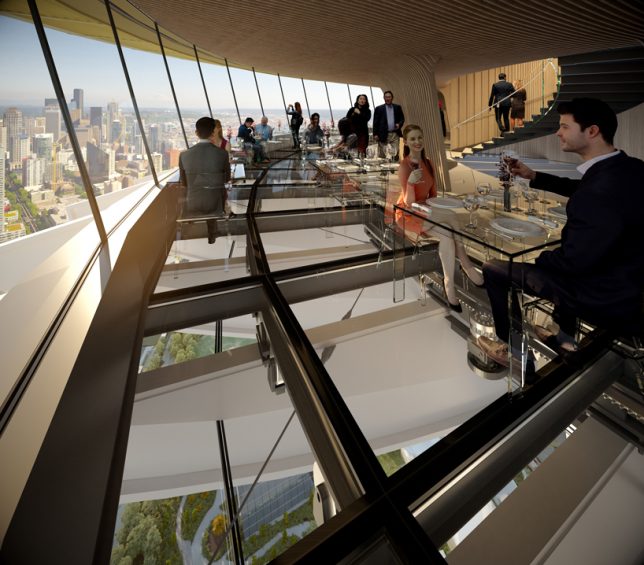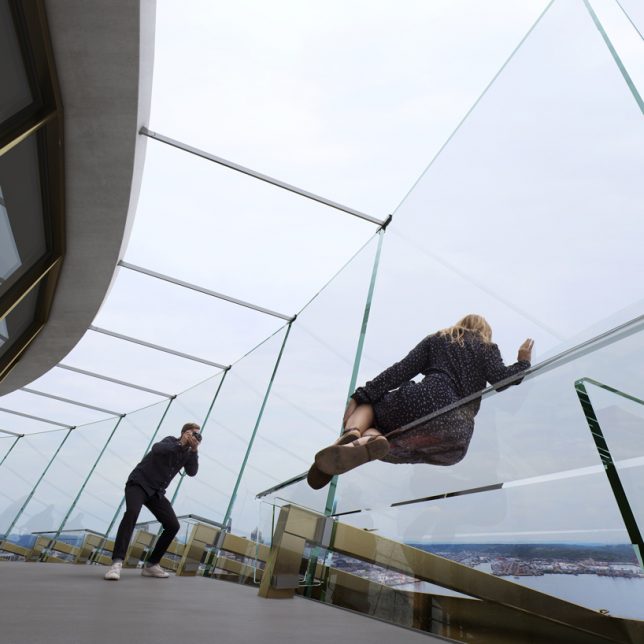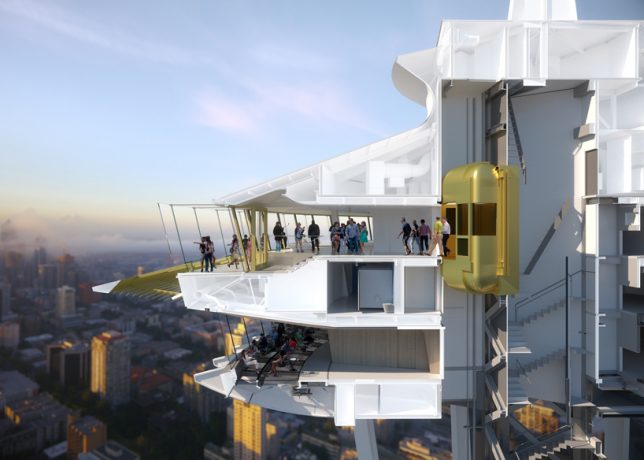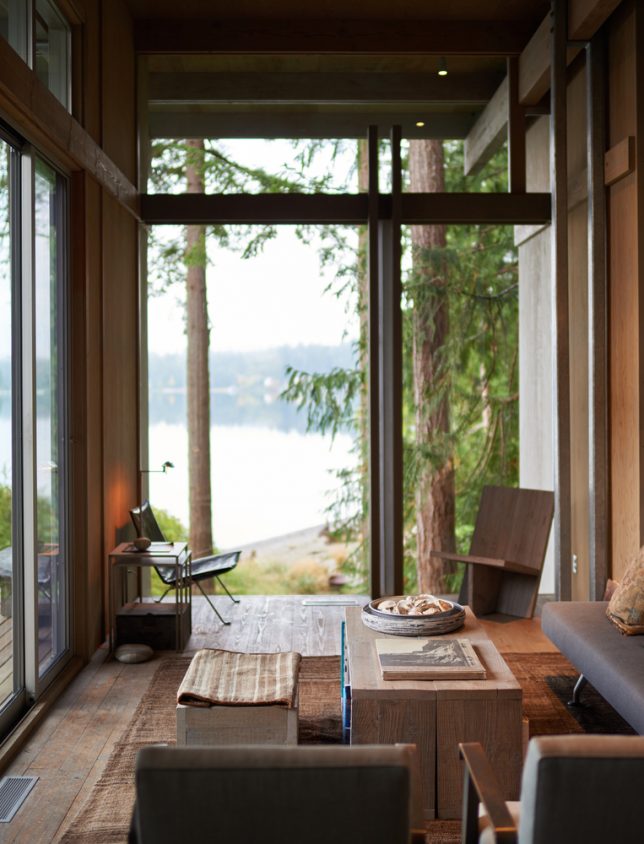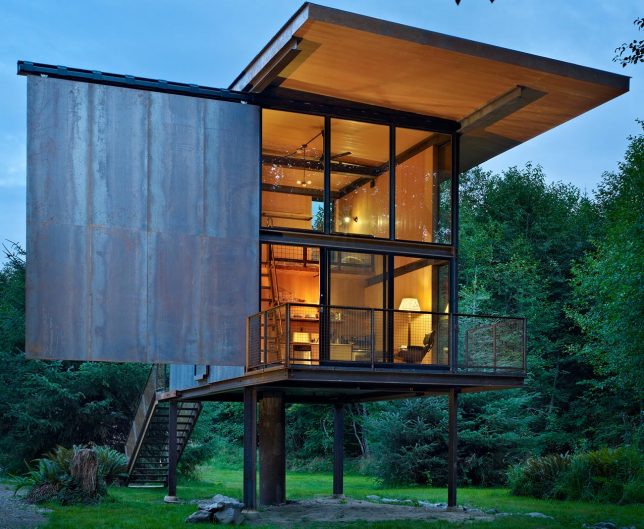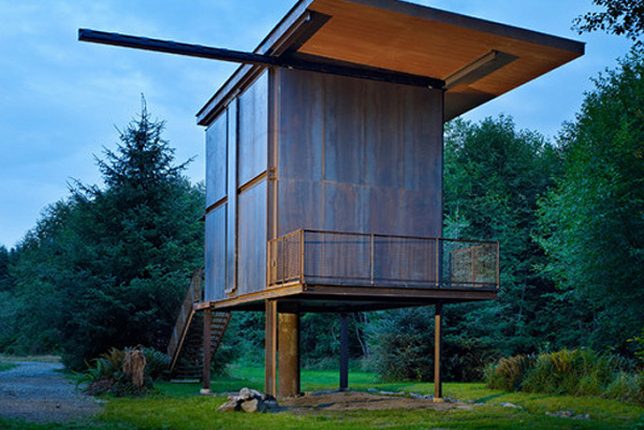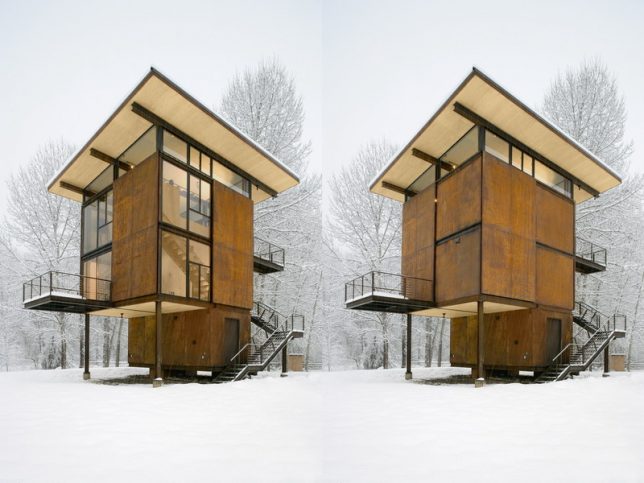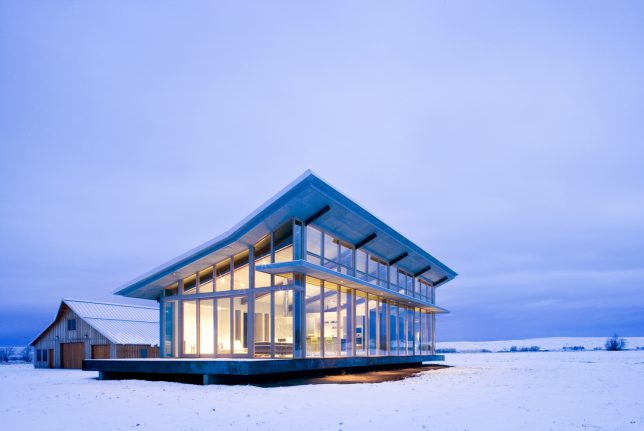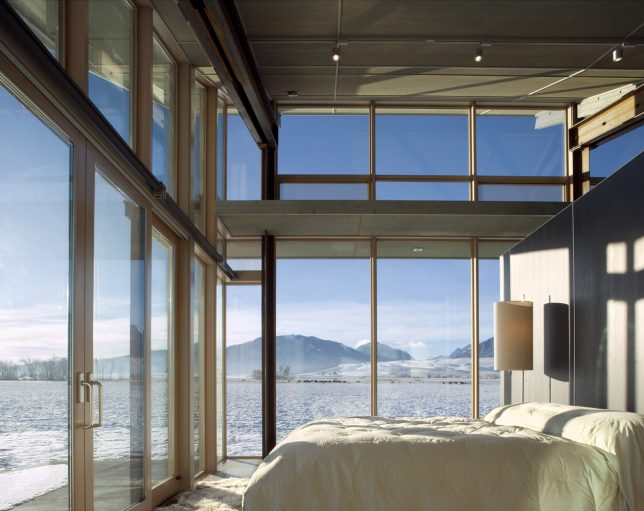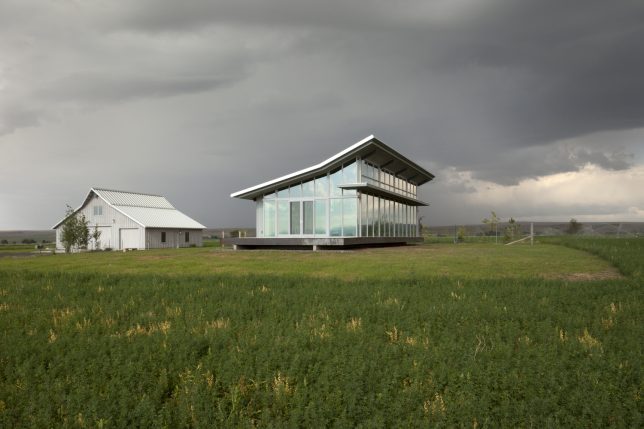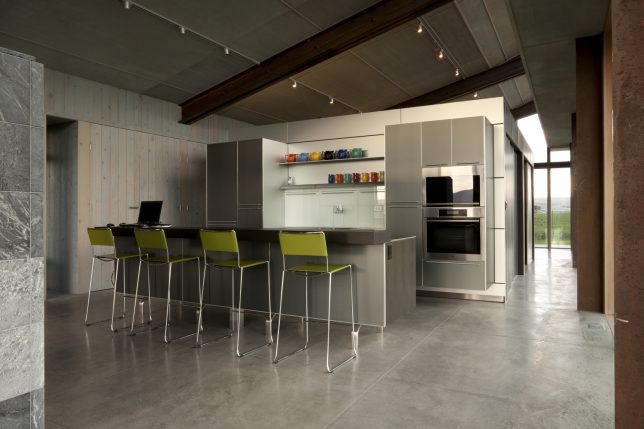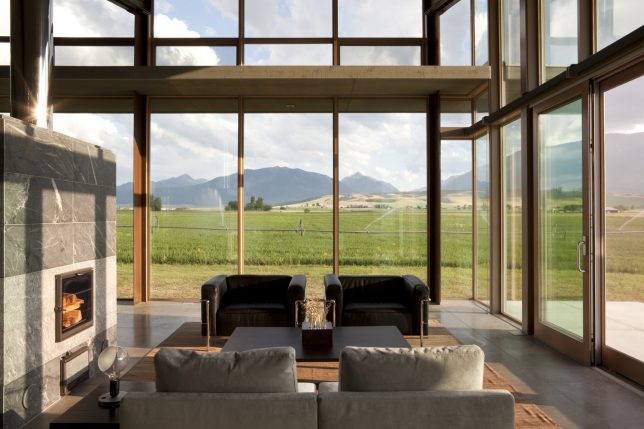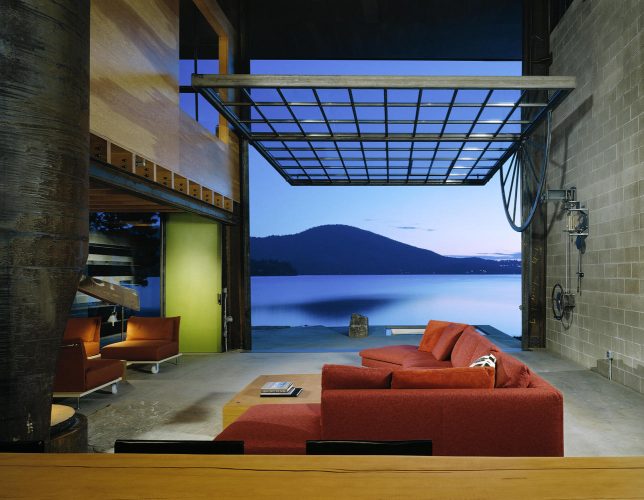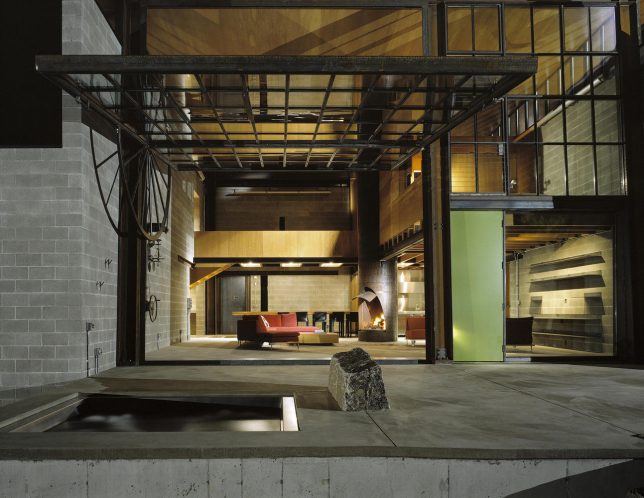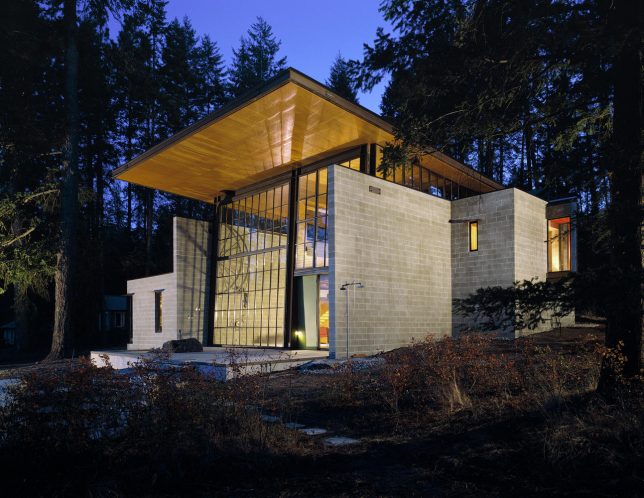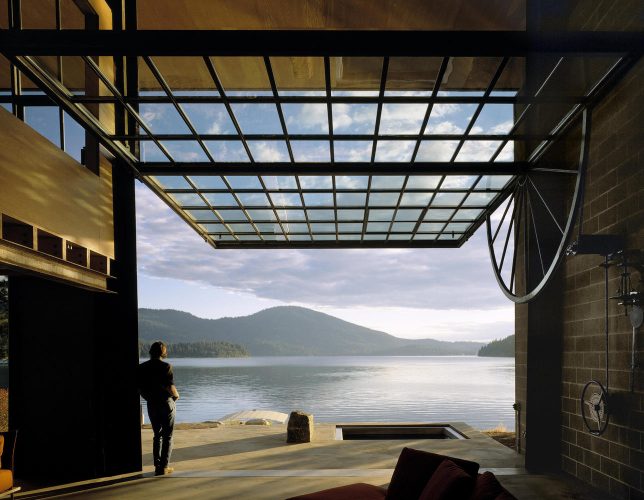Each one of architectural firm Olson Kundig’s creations is in open dialogue with its environment, often integrating oversized glass doors that open wide to the outside world or sliding steel panels to close them up and make them feel safe and secure. The Washington state-based firm, consisting of architects Tom Kundig and Jim Olson, feels quintessentially Pacific Northwest in its choice of raw, rugged materials that can stand up to extreme weather conditions, from wildfire-prone plains and heavy snow pack to rainforests and windswept coasts.
Seattle Space Needle Renovation
While a $100 million renovation of Seattle’s iconic Space Needle may sound like a project that could dramatically change the landmark’s form, it will look much the same in the city’s skyline when it’s complete. Olson Kundig is adding to the experience with floor-to-ceiling glass in both the interior and exterior spaces, including a rotating glass floor on the restaurant level for new downward-facing views of the structure. The architects collaborated with the original structural engineers, architectural historians and preservationists to remain true to the Space Needle’s spirit while removing clutter, replacing the safety cage system with glass barriers for better views.
Cabin at Longbranch
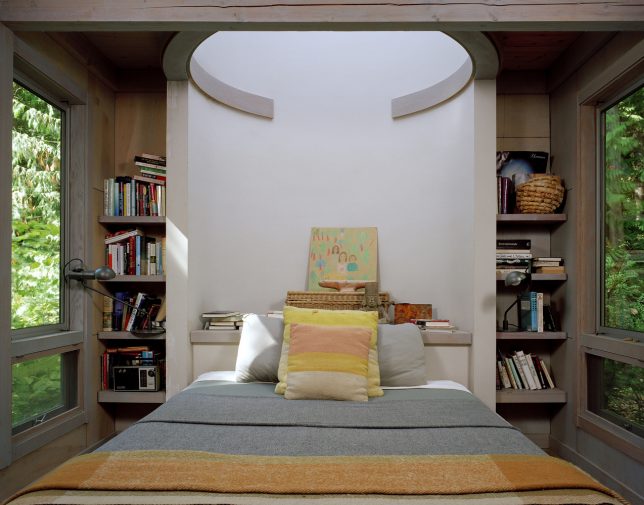
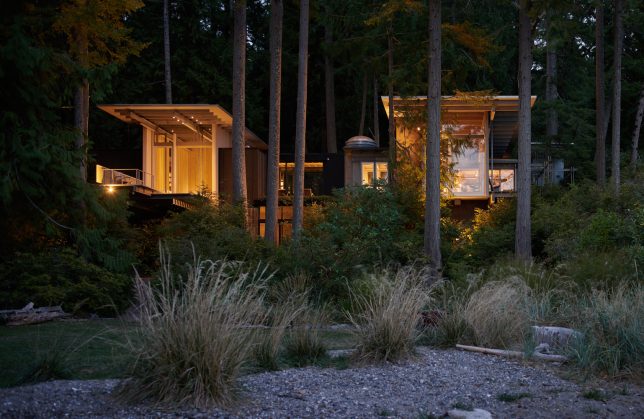
Designed by architect Jim Olson for his own personal use, Cabin at Longbranch is set on the Puget Sound among fir trees, renovating a 200-square-foot bunkhouse built in 1959 into a beautiful weekend house that reuses and reintegrates the original structure into a modernized context. What was previously three pavilions linked by wooden platforms has been joined together under one roof, framing large glass walls facing views of the water.
Sol Duc Cabin
Many of Olson Kundig’s structures transform in some way, opening and closing themselves to the environment for safety, privacy or protection from the elements. This 350-square-foot cabin is envisioned as “a small perch for its occupant,” raised above the soggy rainforest landscape in remote Washington State like a bird’s nest with a view onto the Sol Duc River. The owner and his wife like to use the place periodically for steelhead fishing, and close it up safely when they’re not around. The large shutters slide on rails designed for barn doors and are operated manually with custom steel rods, making the building virtually indestructible.
Glass Farmhouse
You don’t often see glittering glass buildings in rural locations. The owners of this property on a high-altitude plateau wanted a refuge inspired by Philip Johnson’s Glass House, opening up to the wheat fields and surrounding mountains, steps away from their barn. The shed roof of the home takes its shape from that of the barn. While it might look chilly, the house is made with high-efficiency glass and sits on a concrete slab supported by a concrete foundation to absorb and release thermal mass.
Chicken Point Cabin
A massive 19-foot-tall glass garage door opens to the lake outside manually via an industrial-style pulley mechanism in this concrete block cabin, which also boasts a 4-foot diameter steel fireplace the architects call ‘the bong.’ The door is large enough to accommodate long skis, an important feature for this vacation cabin in a snowy location. The cabin sleeps ten and is made of low-maintenance materials that will take on a patina over time.
